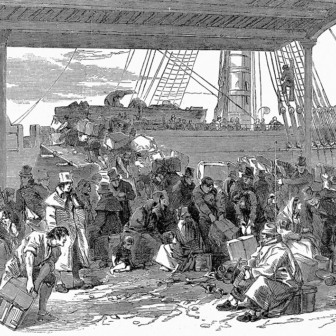While the JobKeeper allowance comes weeks late and represents possibly the biggest policy backflip in Australian history, it is desperately needed. But precisely because it encourages employers to maintain their Australian and NZ-citizen workforce, it gives them little incentive to retain employees who hold any other temporary entry visas.
The allowance will dramatically accelerate the sacking of temporary entrants, of which there are many: around 500,000 overseas students, 140,000 working holiday-makers, 120,000 skilled temporary entrants, 90,000 temporary graduates, more than 200,000 bridging visa holders (most of whom are either partner visa applicants or asylum seekers), and more than 16,000 temporary protection visa holders. Add to that around 60,000 overstayers and the unknown number of the 600,000 people who were in Australia on visitor visas in December 2019 and haven’t gone home.
Remember that very few of these people have any social support to fall back on, even though they have been paying the full rate of income tax. Many will not be able to find a flight home or won’t have the money to pay for one. Some are in genuine fear of persecution if they return home. Unless the government acts soon, it will have created a humanitarian disaster within Australia.
Assuming the government doesn’t wish to extend the JobKeeper allowance to temporary entrants, what should it do?
First, the immigration minister should announce that all temporary entrants (including short-term visitors) whose visas will expire before 30 June 2020 will automatically be given a new visa of the type they currently hold, valid until 31 August 2020.
That date assumes we will have passed the peak of the crisis by then and people will more readily be able to get home. It would significantly reduce the number of temporary entrants making enquiries at departmental offices, thus helping to reduce the spread of the virus.
Second, the health minister should create a new Medicare item enabling all temporary entrants and overstayers to attend a doctor (by telehealth if appropriate) at no cost if they have flu symptoms or may have been in contact with someone who has recently returned from overseas. Where needed, the item should also cover the costs of a coronavirus test and hospital treatment. Overstayers would be given an assurance that they will not be reported to immigration authorities if they contact a doctor.
Once again, the objective would be to reduce the spread of the virus.
Third, the social security minister should extend special benefits to all temporary entrants with work rights (including NZ citizens and visitors required to self-isolate) until 31 July 2020, given that many will lose their jobs and find it difficult to get home.
Access to special benefits requires applicants to establish financial hardship, which will limit take-up. Applications should be taken online and/or over the telephone to minimise risks of further queues at Centrelink offices. Centrelink staff should be able to undertake identity checks in conjunction with the Department of Home Affairs.
Fourth, the social security minister should issue regulations providing a once-off payment equal to the cost of a flight home for temporary entrants (including visitors, overstayers and unsuccessful asylum seekers) who don’t have the necessary funds. The objective would be to prevent these people from becoming destitute. Arrangements should be negotiated with relevant foreign governments to compensate the Australian government for these payments.
Fifth, the treasurer should extend the JobKeeper allowance to any temporary entrant currently working in critical occupations such as health and aged care. At the same time, the immigration minister should introduce a regulation enabling any temporary entrants working in these occupations to secure a further twelve months on a visa of the type they currently hold, with applications to be made online or by telephone free of any application fee.
This would ensure Australia has the staff it needs in these key occupations. Recognising the role they will play in supporting Australians through the crisis, these temporary entrants should be provided with a clear pathway to permanent residence at the end of the twelve months.
Sixth, the immigration minister should increase places available for partners of Australian citizens and permanent residents in the 2019–20 and 2020–21 migration program. This should be possible without increasing overall numbers given there is likely to be a large shortfall because of the coronavirus. Australian citizens and permanent residents should not have to live separated from their partners at this difficult time.
Finally, noting that there will be a shortfall in numbers migrating to Australia under the Offshore Humanitarian Program in 2019–20 and probably in 2020–21, the immigration minister should fast-track permanent protection visas for the 16,000-plus long-term temporary protection visa holders in Australia. It is well beyond time that the government recognised that there is no chance these people will ever be able to go home, and thus no point keeping them on temporary protection visas.
The government needs to move quickly on all these fronts to avoid a humanitarian disaster. •
First published in Pearls and Irritations.




